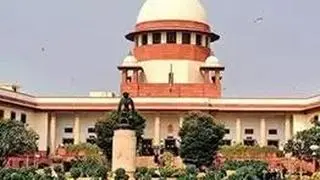From its sweeping victory in the Gujarat polls, the ruling Bhartiya Janata Party (BJP) has further consolidated its position in rural areas. Out of the 109 rural seats in the 182-seat house, the saffron party—known for its strong urban-connect—has secured 89, more than double the 43 seats it won in the 2017 polls.
Besides the Modi factor, rural voters attribute this saffron wave in the villages to the effective and sustained rollout of government schemes in the areas of women and child welfare, agriculture and farmer welfare, social justice, healthcare, besides the visible infrastructure development such as roads and irrigation.
Also, the poll outcome in rural areas is reflective of the blurring lines of the rural-urban divide, as aspirational spending in rural areas has seen an uptick with increased internet connectivity and access to online markets.
“The villagers have benefitted from these schemes, specifically the healthcare scheme of Aayushyaman Bharat and the Gujarat government’s Maa Amrutam yojana, which helped people in their critical times. Secondly, the sustained higher prices of the key agricultural crops like cotton and groundnut for the past couple of years proved a confidence booster for farmer voters,” said Ramesh Bhoraniya, a farmer in Rajkot.
The direct benefit transfer (DBT) also ensured swift and complete payments to the beneficiaries. The case in point is Prime Minister Narendra Modi’s frequent references to it and claiming credit for the benefits reaching in full, unlike what he quoted former Prime Minister Rajiv Gandhi’s famous example of, where only 15 paise out of 100 reached the beneficiaries because of leakages in the system.
In agriculture, Gujarat’s main crops—groundnut and cotton—have fetched attractive prices for the farmers over the past five years. In comparison to 2017 market rates, groundnut prices have increased by nearly 85 percent, while cotton prices have nearly doubled.
The centrally-decided minimum support prices (MSP) for these crops have also been hiked to ₹5,850 (up 31% since 2017) per quintal for groundnut and ₹6,380 (up 48% since 2017) per quintal for raw cotton (kapas).
Market rates for cotton were quoted at ₹8,700 per quintal and groundnut at ₹6,575 per quintal in Gujarat on Friday.
Similarly, a large part of the rural voters also include dairy farmers, who have seen their earnings grow due to cooperative dairying. The success is attributed to the Amul Federation. The 18 dairy union members of Gujarat Cooperative Milk Marketing Federation Limited (GCMMF) are all led by BJP-affiliated leaders having strong influence on policy and development of the dairy industry in the State.
Commenting on the party’s performance in the rural areas, Yamal Vyas, the party spokesperson in Gujarat, said, “The BJP did extensive door-to-door campaigning in the villages. Our teams received feedback from rural women saying that they benefited from government schemes such as the widow pension scheme, etc. This has benefited the party at the grass-roots level.”
Of the 109 rural seats, the Congress’ tally decreased to 12 from 62 in 2017. Interestingly, Arvind Kejriwal’s Aam Aadmi Party (AAP)‘s all the five seats that it won are from these rural clusters—four from Saurashtra and one from South Gujarat.








Comments
Comments have to be in English, and in full sentences. They cannot be abusive or personal. Please abide by our community guidelines for posting your comments.
We have migrated to a new commenting platform. If you are already a registered user of TheHindu Businessline and logged in, you may continue to engage with our articles. If you do not have an account please register and login to post comments. Users can access their older comments by logging into their accounts on Vuukle.